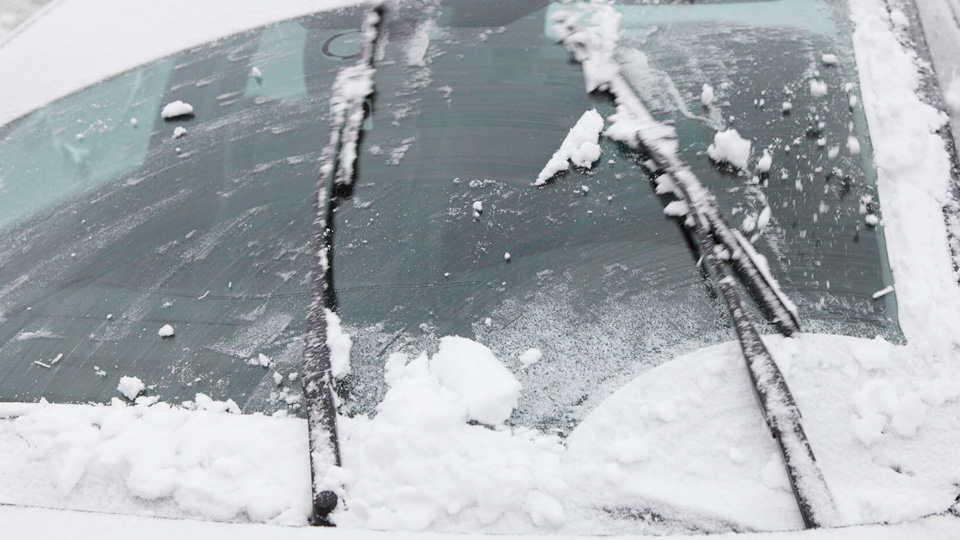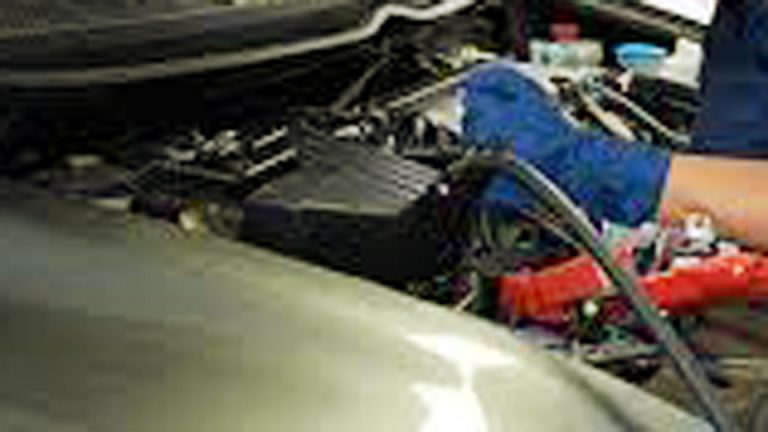Winter driving in the USA can be a real test of patience, especially when snow and ice cling to your windshield wiper blades, turning your morning commute into a blurry mess. I’ve been there, scraping my windshield in a Michigan blizzard, only to have my wipers smear ice across the glass like a bad art project. If you’re wondering how to keep snow from sticking to wiper blades, you’re not alone—it’s a common pain point for car owners, DIY mechanics, and enthusiasts alike.
Whether you’re navigating snowy New England backroads or tackling icy highways in the Midwest, I’ve got practical, hands-on solutions that work. Let’s dive into why this matters, what you can do, and how to keep your wipers working like champs all winter long.

Image by hella-wiperblades
Why Snow on Wiper Blades Is a Big Deal
Snow and ice buildup on wiper blades isn’t just annoying—it’s a safety hazard. When your blades can’t clear the windshield, your visibility drops, and that’s a recipe for trouble on slick roads. I learned this the hard way years ago when my old pickup’s wipers froze solid during a Colorado snowstorm, leaving me squinting through a tiny clear patch.
Poorly maintained or unprepared wiper blades can also wear out faster, scratch your windshield, or strain your wiper motor. For car enthusiasts who baby their rides or DIYers who love tackling maintenance, keeping snow off your blades is about protecting your vehicle and staying safe.
This issue hits hardest in regions like the Northeast, Upper Midwest, or mountain states where heavy snow and freezing temperatures are common. Even in milder climates, like parts of the Pacific Northwest, icy mornings can catch you off guard. The goal is simple: keep your wiper blades functional so you can focus on driving, not wrestling with ice.
Understanding How Snow Sticks to Wiper Blades
Snow sticks to wiper blades when moisture freezes on the rubber edge, forming ice that prevents the blade from making clean contact with the windshield. This happens because wiper blades are exposed to the elements, and their rubber surface is prone to collecting water, snow, and road grime.
When temperatures dip below freezing, that moisture turns into ice, locking the blade in place or reducing its flexibility. For everyday drivers, this means streaky windshields; for enthusiasts, it’s a frustration that can dull the joy of a winter cruise.
The problem worsens with older or worn blades, which lose their flexibility and can’t conform to the windshield’s curve. Add in road salt, slush, and fluctuating temperatures, and you’ve got a perfect storm for wiper woes. Understanding this helps you choose the right prevention methods—whether you’re a DIYer tweaking your setup or a commuter just trying to get to work.
Preventive Maintenance to Stop Snow Buildup
Keeping snow from sticking to your wiper blades starts with proactive maintenance. I’ve spent enough winters tinkering in my garage to know that a little prep goes a long way. Here’s how to set your wipers up for success before the first snowflake falls.
Inspect and Replace Worn Blades
Start by checking your wiper blades for wear. If they’re cracked, torn, or leaving streaks, replace them. I once tried to stretch the life of a pair of blades through a Minnesota winter, and by January, they were useless against ice. Most blades last 6–12 months, but winter conditions can shorten that.
Look for winter-specific wiper blades, like Michelin Stealth Ultra or Bosch Icon, designed with a protective rubber boot to resist snow and ice buildup. These are pricier than standard blades (around $20–$30 each), but they’re worth it for heavy snow regions.
Steps to Inspect and Replace:
- Lift the wiper arm away from the windshield.
- Check for cracks, tears, or stiff rubber.
- If replacing, match the blade size to your vehicle (check your owner’s manual or use an online fitment guide).
- Snap the new blade onto the arm—most are tool-free and take 5 minutes.
Pro Tip: For DIYers, keep a spare set of blades in your garage. Swapping them out in fall ensures you’re ready for snow.
Clean Your Wiper Blades Regularly
Dirty blades attract snow and ice like a magnet. Road salt, grime, and oil residue create a sticky surface that snow clings to. I make it a habit to clean my blades every couple of weeks during winter, especially after driving on salted roads. Use a clean rag and windshield washer fluid or a 50/50 mix of water and vinegar to wipe down the rubber edge. Avoid harsh chemicals like ammonia, which can degrade the rubber.
Cleaning Process:
- Lift the wiper arm.
- Dampen a rag with washer fluid or vinegar solution.
- Wipe the entire rubber edge, removing dirt and grime.
- Dry with a clean cloth to prevent freezing.
This takes 5 minutes and can prevent snow from sticking by keeping the blade’s surface smooth and clean.
Use Winter-Specific Windshield Washer Fluid
Your washer fluid is your wiper blades’ best friend in winter. Standard blue washer fluid can freeze in subzero temps, leaving your blades helpless against snow. Switch to a winter-grade fluid rated for low temperatures (like Prestone De-Icer, rated to -27°F). I learned this lesson after my fluid froze during a Wisconsin road trip, leaving me with a slushy windshield. Winter fluids contain alcohol to prevent freezing and help melt light ice buildup on blades.
Choosing the Right Fluid:
- Look for a fluid rated for your region’s lowest temperatures.
- Check for de-icing additives to help with snow and ice.
- Refill your reservoir before it runs low—keep a spare jug in your trunk.
Warning: Never use hot water to de-ice your windshield or blades. It can crack the glass or damage the rubber. I’ve seen this mistake ruin a friend’s windshield on a frigid morning.
Practical Solutions to Keep Snow Off Wiper Blades
Once your blades are in good shape, you need strategies to keep snow and ice at bay during winter. These methods are battle-tested from my years of driving everything from sedans to SUVs in snowy climates. They’re simple, effective, and tailored for US drivers.
Apply a Water-Repellent Treatment
Water-repellent treatments, like Rain-X or Aquapel, create a slick surface on your wiper blades and windshield, making it harder for snow and ice to stick. I started using Rain-X on my old Jeep, and it was a game-changer for keeping my blades clear during heavy snow. These products work by repelling water and reducing adhesion, so snow slides off more easily.
How to Apply:
- Clean your blades and windshield thoroughly.
- Apply the treatment to a dry cloth and wipe along the rubber edge of the blades.
- For the windshield, follow the product’s instructions (usually a quick wipe and buff).
- Reapply every 2–4 weeks for best results.
Pros and Cons:
| Pros | Cons |
|---|---|
| Reduces snow and ice adhesion | Needs regular reapplication |
| Improves visibility in storms | Can be messy to apply |
| Works on both blades and windshield | Some products have a strong smell |
Real-World Tip: If you’re in a pinch, rubbing alcohol wiped on the blades can act as a temporary water repellent. I’ve used this trick when caught in a storm without Rain-X on hand.
Lift Wiper Blades When Parked
One of the easiest ways to prevent snow buildup is to lift your wiper blades off the windshield when you park. This stops them from freezing to the glass, which can tear the rubber or strain the wiper motor. I started doing this after a storm in upstate New York left my blades glued to the windshield, forcing me to chip them free. Just lift the wiper arms up before a storm—it takes 10 seconds and saves a headache.
When to Do It:
- Before a forecasted snow or ice storm.
- When parking overnight in freezing conditions.
- If you’re leaving your car outside for extended periods.
Warning: Don’t lift blades in high winds, as the arms can snap back and crack your windshield. I’ve seen this happen to a neighbor’s car during a gusty Ohio storm.
Use Silicone-Based Lubricants
Silicone-based lubricants, like WD-40 Specialist Silicone or Permatex Silicone Spray, can make wiper blades less prone to snow buildup. These products create a slick, non-stick surface on the rubber, similar to water repellents but longer-lasting. I’ve used silicone spray on my truck’s blades, and it noticeably reduced ice buildup during heavy snow.
Application Steps:
- Clean the blades with washer fluid or vinegar solution.
- Spray or wipe a thin layer of silicone lubricant along the rubber edge.
- Wipe off any excess to avoid smearing on the windshield.
- Reapply every 4–6 weeks.
Pros and Cons:
| Pros | Cons |
|---|---|
| Long-lasting snow resistance | Can attract dust if overapplied |
| Easy to apply | May not work in extreme cold |
| Protects rubber from cracking | Slight cost for the product |
DIY Tip: If you’re a car enthusiast, consider treating your blades as part of your regular detailing routine. It’s a small step that keeps your wipers in top shape.
Install Heated Wiper Blades
For those in harsh winter climates, heated wiper blades are a high-tech solution. Brands like Everblades offer blades with built-in heating elements that prevent snow and ice buildup. I installed these on my Subaru during a brutal Montana winter, and they kept my blades clear even in -10°F blizzards. They connect to your car’s battery or fuse box and warm up when activated.
Installation Overview:
- Purchase blades compatible with your vehicle (check fitment guides).
- Follow the manufacturer’s wiring instructions (basic tools like a wrench and screwdriver needed).
- Test the heating function before winter hits.
Cost and Considerations:
- Price: $100–$150 per pair.
- Installation: 30–60 minutes for DIYers; professional install adds $50–$100.
- Best for: Extreme cold regions (Upper Midwest, Northeast, Rockies).
Warning: Improper wiring can drain your battery or cause electrical issues. If you’re not comfortable with basic wiring, consult a mechanic.
Emergency Fixes for Snowy Wiper Blades
Sometimes, snow catches you off guard, and you need a quick fix to get your wipers working. These are my go-to solutions for when I’m stuck in a storm or parked in an icy lot.
De-Ice Blades with Rubbing Alcohol
Rubbing alcohol (70% isopropyl) is a lifesaver when your blades are frozen to the windshield or coated in ice. I keep a small bottle in my glovebox for emergencies, especially after a surprise ice storm in Chicago left me stranded. The alcohol lowers the freezing point, melting ice quickly.
How to Use:
- Pour or spray rubbing alcohol along the blade’s rubber edge.
- Wait 1–2 minutes for the ice to soften.
- Gently lift the blade and wipe away remaining ice with a cloth.
Warning: Don’t pour alcohol directly on the windshield—it can damage wiper fluid seals or paint PIECE paint.
Warm Washer Fluid Reservoirs
If your washer fluid is frozen, warm it up slightly to help free your blades. I竣
Steps:
- Warm a small amount of fluid in a cup or bottle.
- Pour it over the blades and windshield.
- Wait a few minutes, then gently free the blades.
This works faster than scraping and is less likely to damage the blades. I’ve used this trick on my SUV during a sudden freeze, and it saved the day.
Manual Ice Removal
If you don’t have alcohol, carefully chip away ice with an ice scraper or credit card. I’ve done this in a pinch with a plastic card from my wallet. Be gentle to avoid tearing the rubber.
Steps:
- Lift the wiper arm slightly.
- Chip away ice from the blade and windshield contact point.
- Test the wiper to ensure it moves freely.
Warning: Don’t force the wiper arm—it can damage the motor or arm.
Choosing the Right Wiper Blades for Winter
Not all wiper blades are created equal for winter driving. Here’s a quick comparison of standard, winter, and heated blades to help you choose.
| Type | Features | Best For | Cost |
|---|---|---|---|
| Standard Blades | Basic rubber, no protective cover | Mild climates, light snow | $10–$20 |
| Winter Blades | Rubber boot, flexible rubber | Moderate to heavy snow | $20–$30 |
| Heated Blades | Heating element, durable cover | Extreme cold, heavy snow | $100–$150 |
My Pick: Winter blades like Bosch Icon or Rain-X Latitude for most US winter climates. They’re affordable and designed for snow.
Regional Tips for US Winter Driving
Winter driving varies across the USA, and your wiper strategy might depend on your region’s conditions. Here are tailored tips based on my experience driving in different climates.
Northeast (Heavy Snow, Freezing Rain):
- Use winter or heated blades for maximum ice resistance.
- Apply silicone lubricant and water repellent regularly.
- Keep extra washer fluid and a scraper in your car.
Upper Midwest (Extreme Cold, Blizzards):
- Heated blades are ideal for subzero temps.
- Lift blades during long parking periods.
- Use alcohol-based de-icing fluid for emergencies.
Mountain States (High Altitude, Variable Weather):
- Winter blades handle mixed snow and ice well.
- Check blades frequently for wear due to UV exposure.
- Carry a portable de-icer like a spray bottle of rubbing alcohol.
Pacific Northwest (Mild Winters, Icy Mornings):
- Standard blades may suffice, but winter blades add reliability.
- Clean blades often to remove road grime and sap.
- Use water repellent for light snow and ice.
Conclusion
Keeping snow from sticking to your wiper blades is about preparation, the right tools, and quick thinking. From my years of wrestling with winter weather in various cars, I’ve learned that a little effort before the storm—cleaning blades, using winter fluid, applying repellents—can save you from dangerous visibility issues.
Whether you’re a DIY mechanic, a car enthusiast, or just trying to get to work, these tips will keep your wipers ready for action. Pick a method that fits your climate and driving habits, and don’t skimp on maintenance. A clear windshield is your best defense against winter’s worst.
Check your wiper blades and fluid levels every fall, even if you don’t expect snow. A quick inspection can prevent a mid-storm headache.
FAQ
How often should I replace my wiper blades in winter?
Check your blades every 6 months, but replace them before winter if they show signs of wear like cracking or streaking. Winter conditions can wear blades out faster, so inspect them after major storms.
Can I use regular washer fluid in winter?
No, regular washer fluid can freeze in cold temperatures. Use a winter-grade fluid rated for low temperatures (like -20°F or lower) to prevent freezing and help melt ice on your blades.
Are heated wiper blades worth the cost?
For extreme cold regions like the Upper Midwest or Rockies, heated blades are worth it for their ability to prevent snow and ice buildup. For milder climates, winter blades are usually sufficient.
What’s the fastest way to de-ice wiper blades?
Pour or spray 70% isopropyl alcohol on the blades and wait 1–2 minutes. Gently chip away softened ice with a scraper or cloth. Avoid hot water—it can damage the blades or windshield.
Can I prevent snow buildup without special blades?
Yes, regular maintenance like cleaning blades, applying water repellent or silicone lubricant, and lifting blades when parked can significantly reduce snow buildup on standard blades.


